

Derek Fung
Revived Ram 1500 TRX could debut on New Year's Day
2 Days Ago
There wasn't much wrong with the D-Max, but that hasn't stopped Isuzu from refining the formula for 2022.

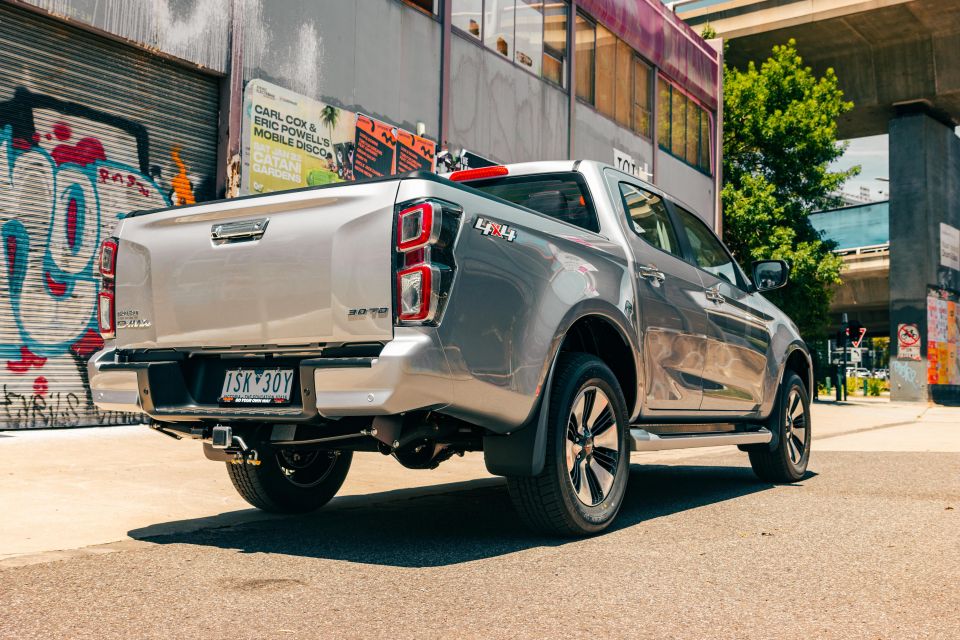

Contributor
New from
$50,900
excl. on-roads

Contributor
New from
$50,900
excl. on-roads


Contributor
New from
$50,900
excl. on-roads

Contributor
New from
$50,900
excl. on-roads
Quickly see how this car stacks up against its competition. Select any benchmark to see more details.
Where expert car reviews meet expert car buying – CarExpert gives you trusted advice, personalised service and real savings on your next new car.
By now, we know the Isuzu D-Max is a good thing.
It’s coming off a strong year of sales, and has scored higher than 8.0 in every trim we’ve tested. In some ways, Isuzu is a victim of its own success; supply constraints and huge demand at the top of the range have conspired to create long wait lists, and to frustrate customers who just want their new car.
For all its strengths, we also know the active safety features in the D-Max – although they’re a selling point – are tricky to turn off, which has earned the ire of owners and journalists alike.

The 2022 Isuzu D-Max LS-U+ on test here is aimed at fixing both those problems. It slots in between the LS-U and the X-Terrain in the range, offering most of the X-Terrain’s equipment at a lower price, and in a package that doesn’t look quite as out there.
In theory, it should help lessen the wait for the X-Terrain by offering buyers an alternative.
As for the active safety kit? The entire range now benefits from a new steering wheel switch that’ll turn off all lane support systems if you hold it for two seconds.
Sounds good, right? Well, the LS-U+ isn’t cheap, and the competition has become stronger since the D-Max launched. That means it’s not a guaranteed success.
The LS-U+ is priced at $61,900 before on-road costs, making it $2500 more expensive than the regular LS-U, but a considerable $4000 cheaper than the range-topping X-Terrain.
At that price, it goes head-to-head with the Ford Ranger XLT Bi-Turbo ($61,190), the Toyota HiLux SR5+ ($62,420), the Nissan Navara PRO-4X ($60,630), and the range-topping Mitsubishi Triton GSR ($53,240).
Given it shares its chassis and oily bits with the Mazda BT-50, the D-Max could also logically be cross-shopped with the BT-50 GT ($59,990).
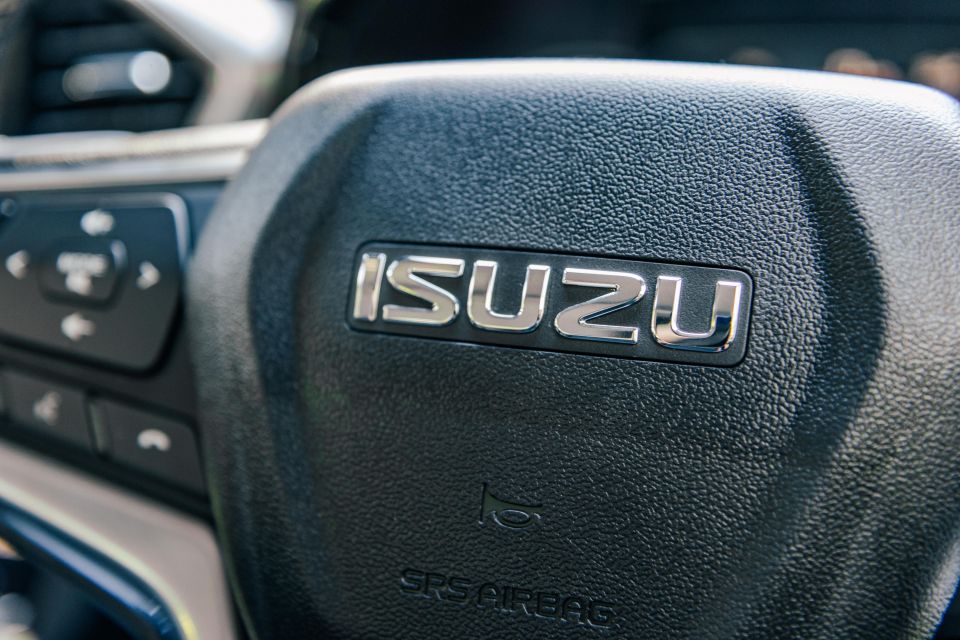
2022 Isuzu D-Max 4×4 pricing:
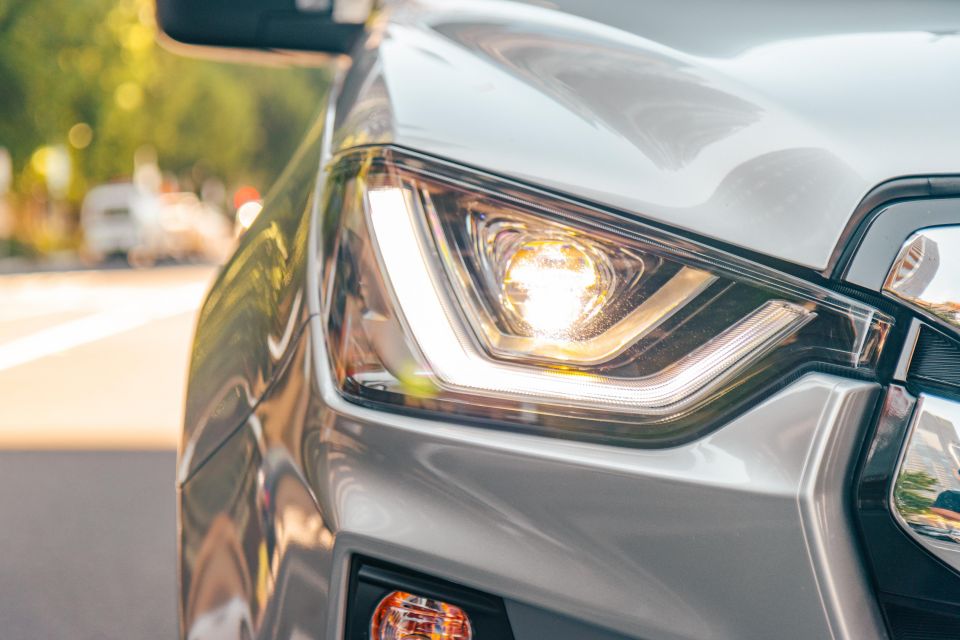
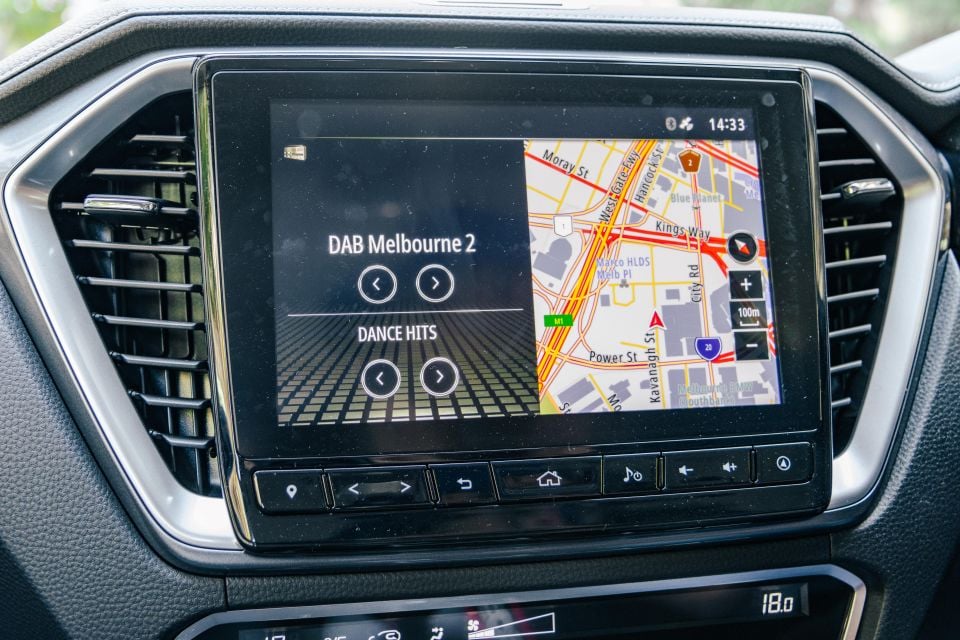
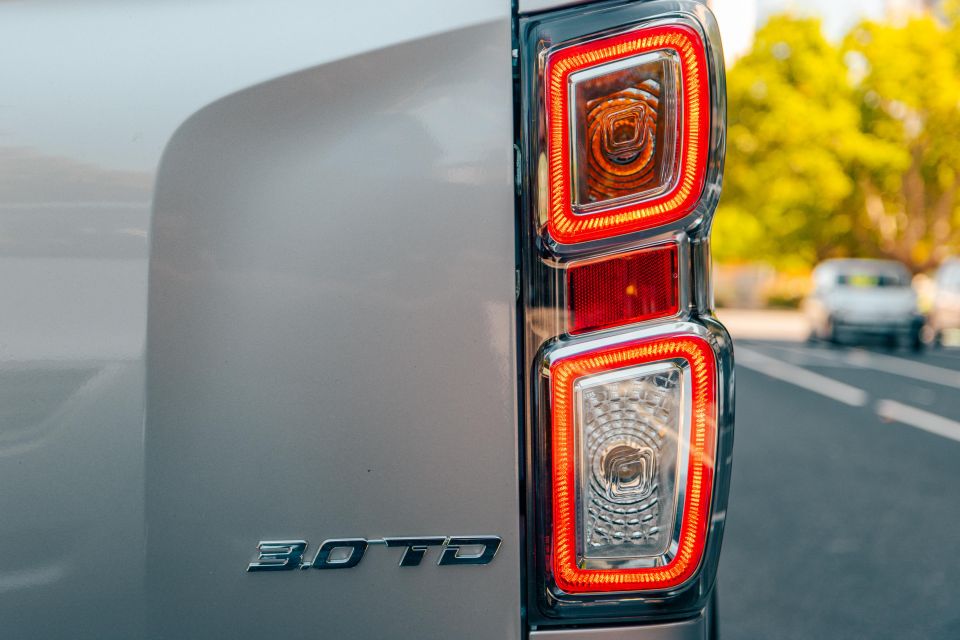

Buy your new car without the stress. It's fast, simple and completely free.

Great service from Travis and team, second time I have used this business would not hesitate to recommend them to anyone
Craig C.
Purchased a Ford Ranger in Sunshine Coast, QLD
CarExpert helped Craig save thousands on his Ford Ranger, now let us save you on your next new car.
Find a dealStandard equipment on the D-Max SX includes:
Moving to the LS-M brings:
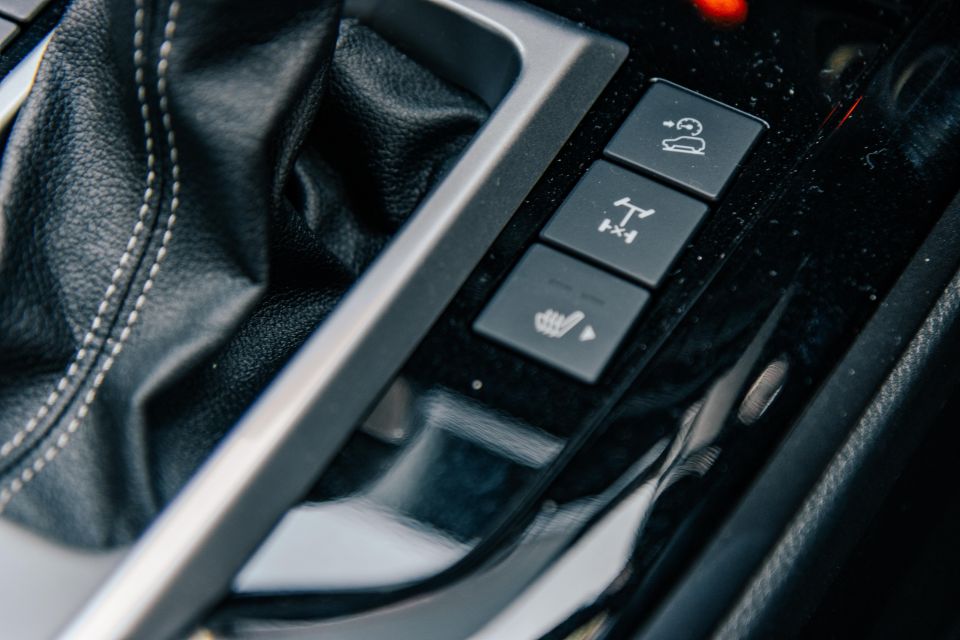
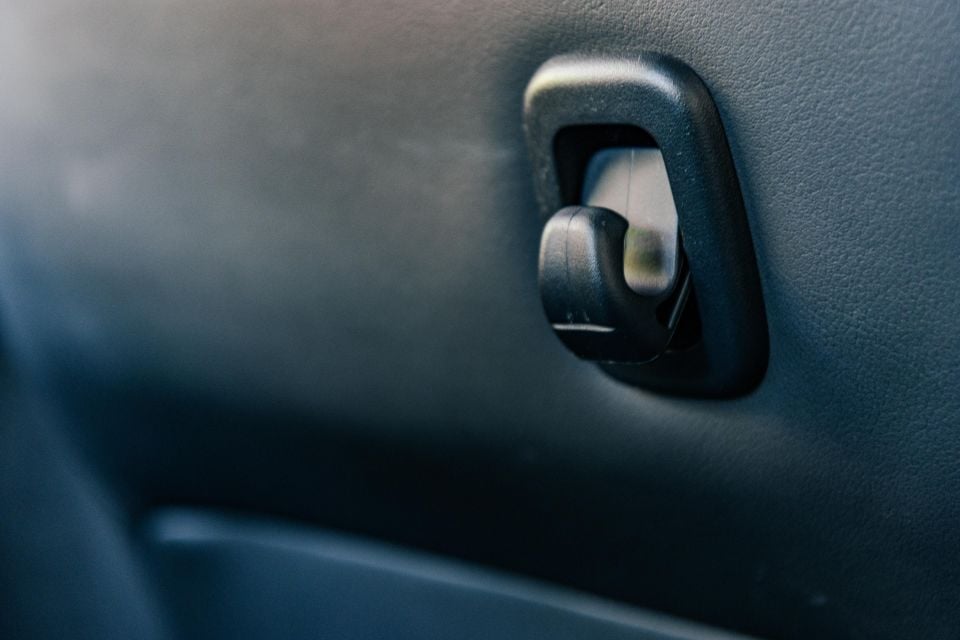
Jumping to the LS-U adds:
The LS-U+ gains:
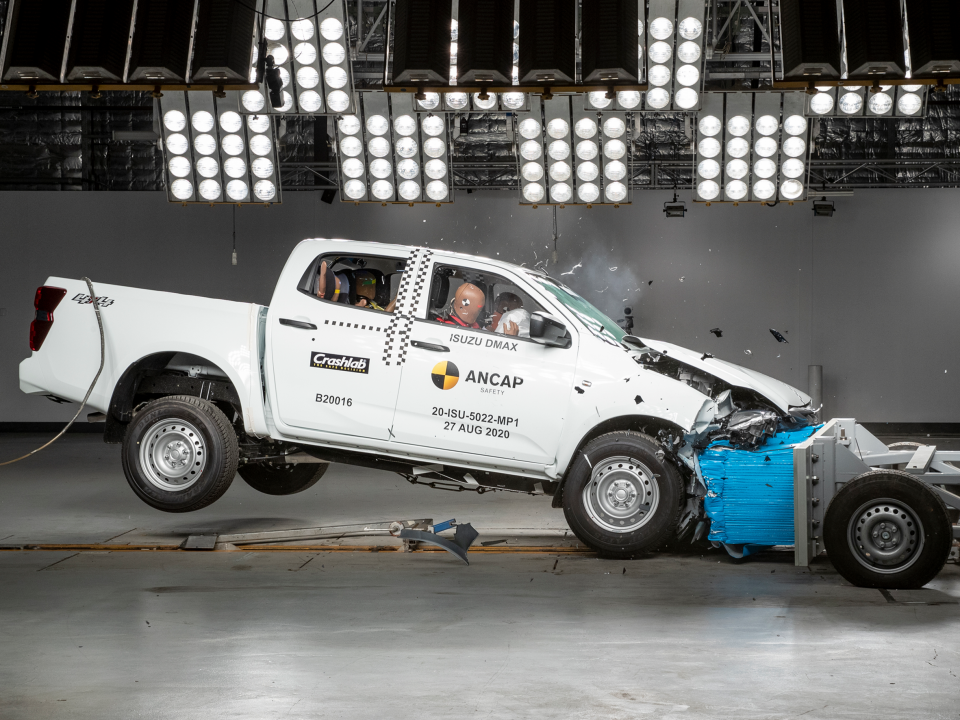
The Isuzu D-Max was tested by ANCAP in 2020 and earned a five-star safety rating.
That rating was based on an adult occupant protection score of 83 per cent, a child occupant protection score of 89 per cent and a safety assist score of 81 per cent. Vulnerable road user protection testing yielded a score of 69 per cent.
Every model comes standard with the following safety features:
Automatic models also add wrong-pedal acceleration warning, adaptive cruise control, and lane-keep assist.
Eight airbags are standard, including a front-centre airbag designed to stop the passenger and driver’s flailing arms and heads crashing into each other in a serious side-impact crash.
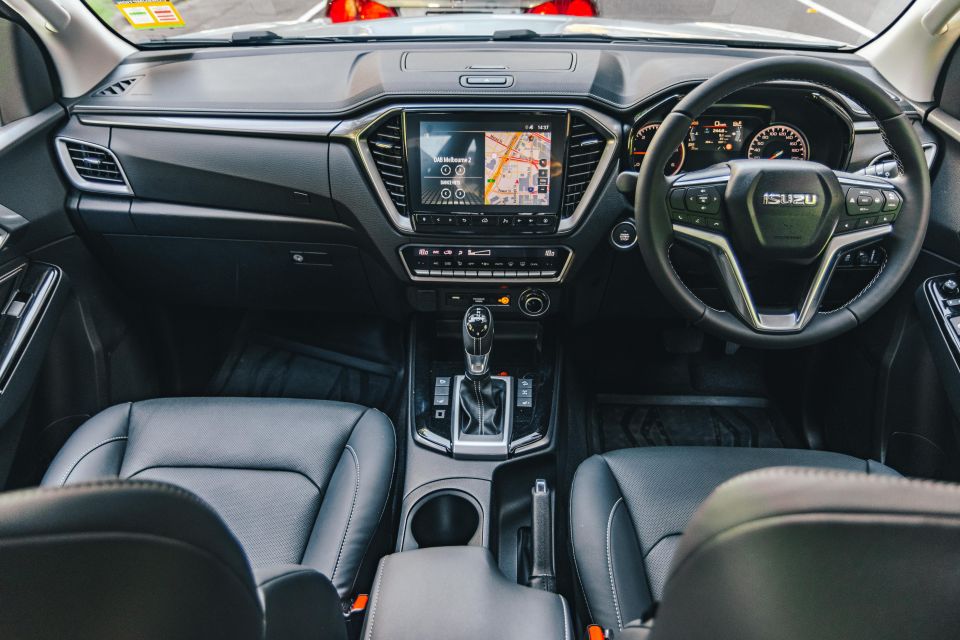
The biggest change to the D-Max on the inside comes in the form of a little button on the steering wheel.
Rather than having to flick through menus to disable the lane-keeping and active steering systems in the car every time you turn it on – a 30 second process – you can now hold a hard button for two seconds to accomplish the same outcome. It’s a much better solution, and shows what happens when carmakers listen to their customers.
Otherwise, this cabin is nearly identical to that of the X-Terrain. You get leather-accented seats that offer plenty of adjustment for a wide range of body styles, and a compact leather steering wheel that feels great in your hands.
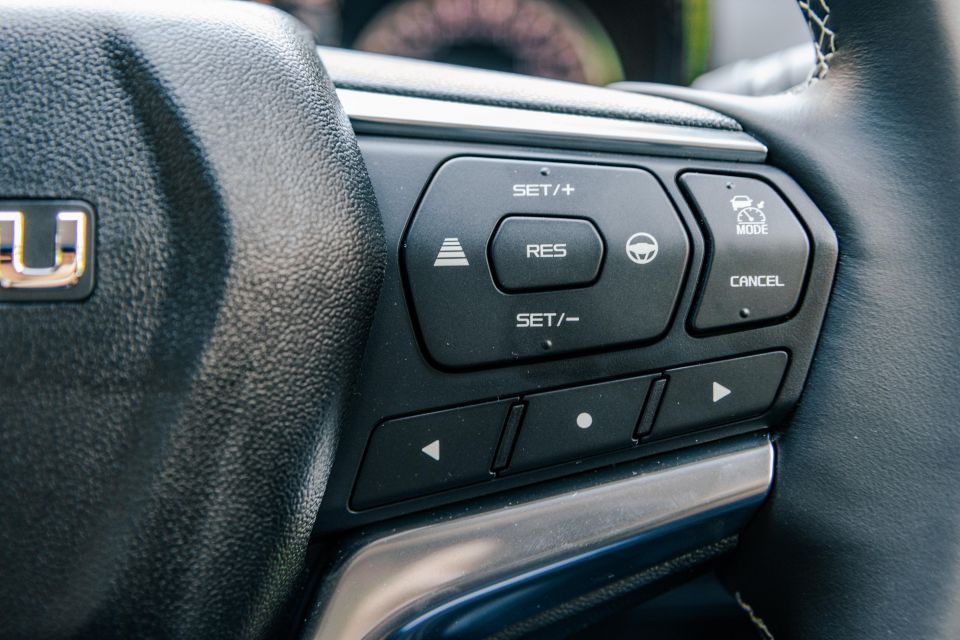
There’s just the right amount of bolstering in the seats, although the scalloped-out backrest means there’s not quite as much lumbar support as would be ideal.
Isuzu has kept the pop-out cupholders on the outer edges of the dashboard for 2022 – a good thing given the central cupholders swallow a small coffee cup whole, with nothing protruding for the driver to grab onto. Base models miss out, but the LS-U+ also gets a split glovebox and a pop-top storage compartment atop the dash.
With soft leather atop the dashboard and on the door trims, it’s clear Isuzu has put some thought into making the LS-U+ feel worthy of its price.
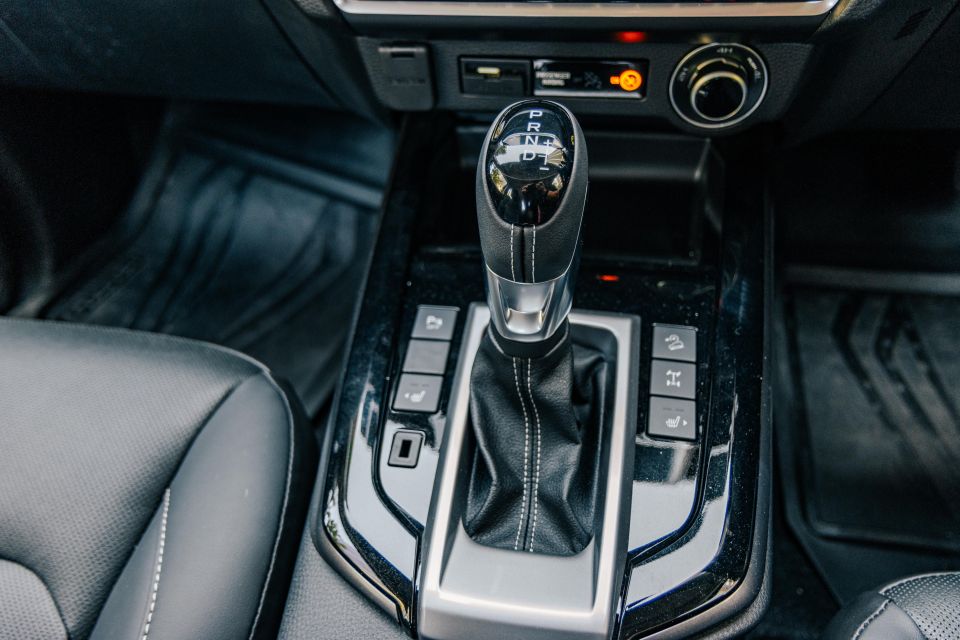
The majority of what you touch feels hard-wearing and the leather bits feel high-quality, but don’t go in expecting this $60,000 dual-cab ute to come close to matching a $60,000 SUV or passenger car for luxury behind the wheel.
It’s going to be interesting to see if the new Ford Ranger moves the game forward – at the moment, the D-Max is aligned with its rivals, but the dual-cab ute class is crying out for someone to take the lead when it comes to luxury finishes.
The standard 9.0-inch infotainment touchscreen is excellent when you’re using the wireless smartphone mirroring. Apple CarPlay connects within 30 seconds of startup and feels smooth to operate, and didn’t drop out during our time behind the wheel.


Otherwise, the system is pretty basic. The factory satellite navigation system is handy to have, and the inbuilt phone interface is serviceable, but the system lacks the last few layers of OEM polish of what’s on offer in its rivals.
In front of the driver is a simple set of analogue dials, between which sits a 4.2-inch colour trip computer display. Along with a digital speedo, it shows information about your off-road hardware, fuel economy, and media.
The addition of that steering wheel button means you don’t need to go menu-diving quite as frequently as maybe you otherwise would, but basic things like setting the clock (which isn’t linked to the time in the central display) are quite fiddly. Again, it’s functional but not overly flashy.
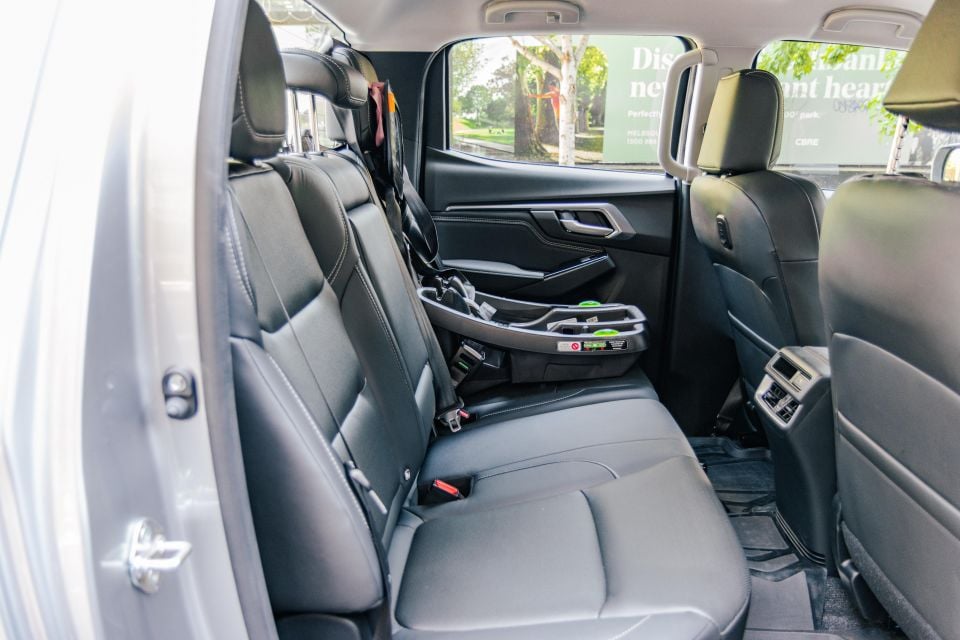
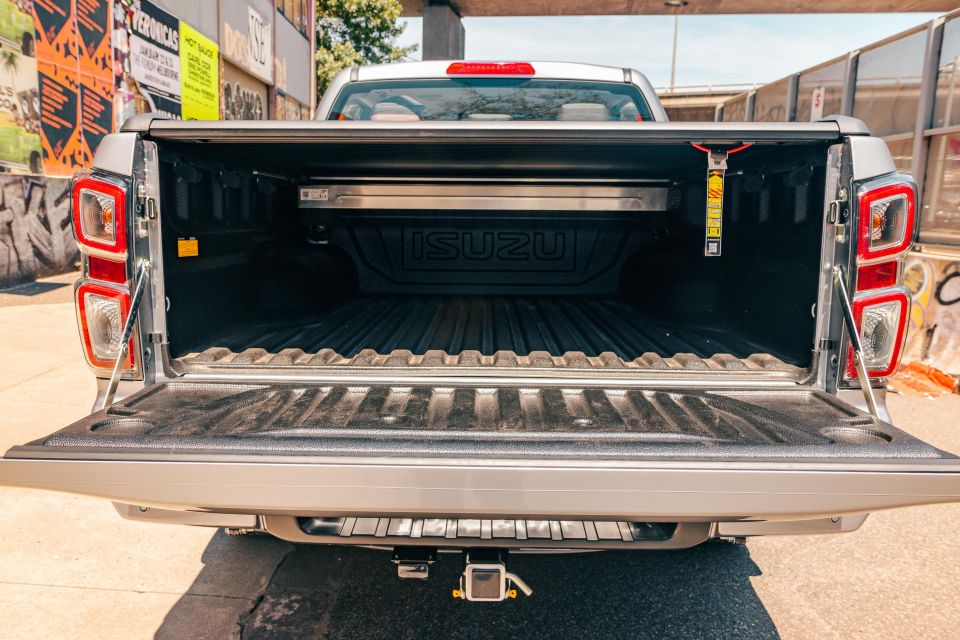
There are two USB ports: one in the front, and one in the rear. You don’t get wireless phone charging.
Rear legroom is par for the dual-cab ute class, as is toe-room. There’s plenty of headroom back there, and children or troublesome apprentices will appreciate the air vents on hot days.
There are two ISOFIX points and three top tether mounts back there, and the seat bases lift up to free up more space for items you don’t want to slot into the tray.
We also loved the inclusion of a hook behind the passenger seat for shopping bags and other bits and pieces that have a habit of flying around the cabin.
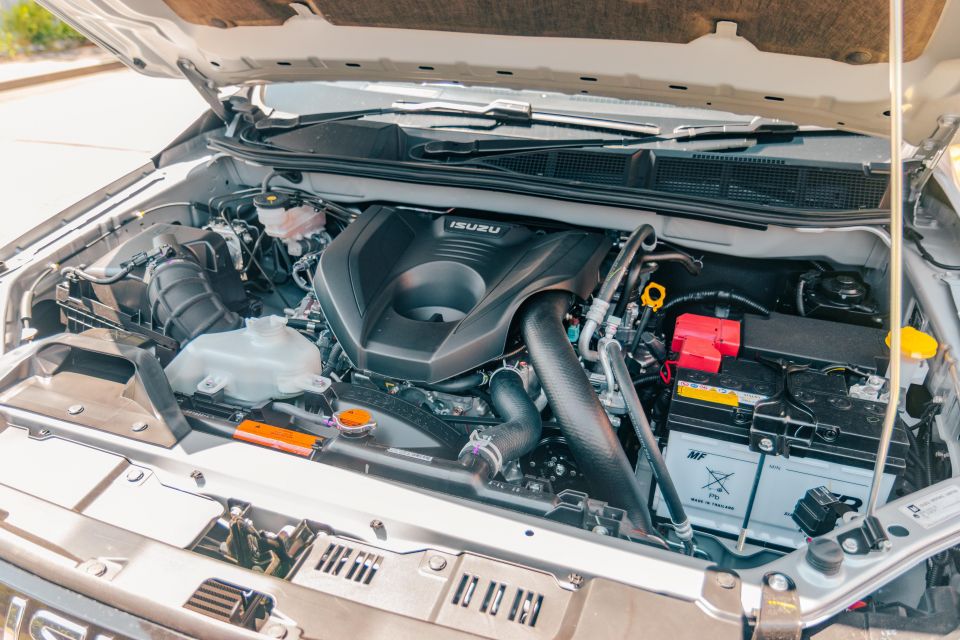
The D-Max is powered by a 3.0-litre four-cylinder turbo-diesel engine producing 140kW of power and 450Nm of torque. It’s available with a six-speed manual or six-speed torque-converter automatic transmission, though our tester was equipped with the latter.
The new 4JJ3-TCX engine is up 10kW and 20Nm on the 3.0-litre mill in the old D-Max. Although it’s available in 4×2 guise, the LS-U is four-wheel drive only. Along with 4H and low-range, the car features a locking rear differential as standard.
Braked towing capacity is 3500kg, unbraked is 750kg. As of 2022, the gross combination mass of four-wheel drive D-Max models is up 50kg to 6000kg.
Its approach angle is 30.5 degrees, departure angle is 24.2 degrees, and ramp-over angle is 23.8 degrees, while Isuzu claims an 800mm wading depth.
Claimed fuel economy is 8.0 litres per 100km, and the D-Max has a 76L fuel tank.
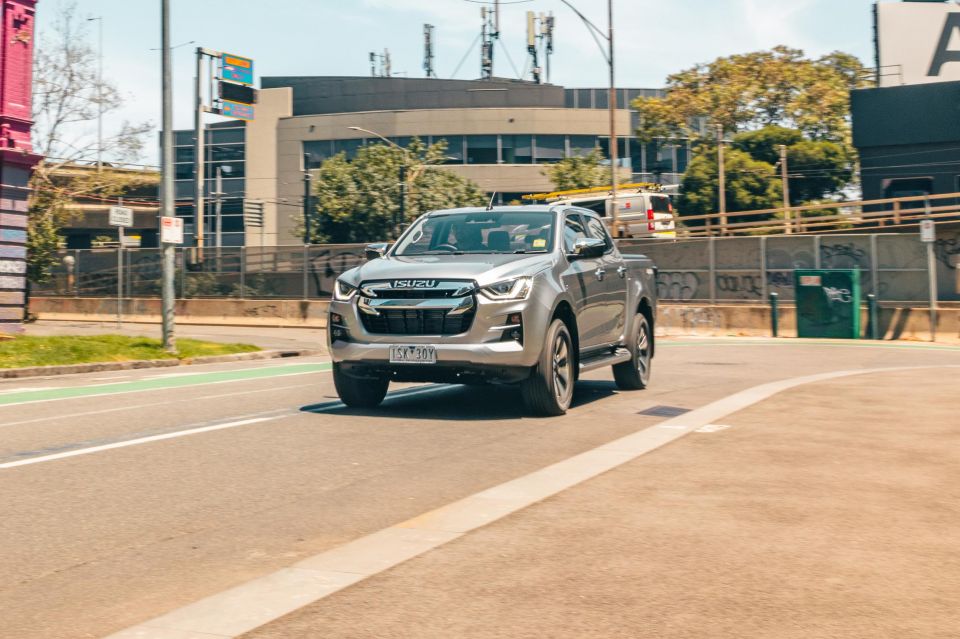
Nothing has changed in the D-Max from behind the wheel, which is mostly a good thing.
For starters, the engine is a winner. It’s still a bit clattery, but the 3.0-litre turbo-diesel engine is significantly smoother and quieter than the engine from the old D-Max behind the wheel.
Peak torque comes on tap at just 1600rpm and sticks around until 2600rpm, so performance is strong off the mark. It stays linear as the revs build, offering exactly what the driver wants, when they want it.

Where expert car reviews meet expert car buying – CarExpert gives you trusted advice, personalised service and real savings on your next new car.
With 300Nm of torque still on tap at 4000rpm, it also doesn’t run out of puff as the mid-range bleeds into the top end.
Even 18 months on from launch the engine offers more punch than you’d expect given its outputs are on par with its rivals, not class-leading.
Mated to the engine is a smooth-moving six-speed automatic. It’s unobtrusive most of the time, shuffling smartly through the gears when you’re cruising around town. At launch, Isuzu said the transmission is tuned to better use the engine’s mid-range torque instead of hunting around.
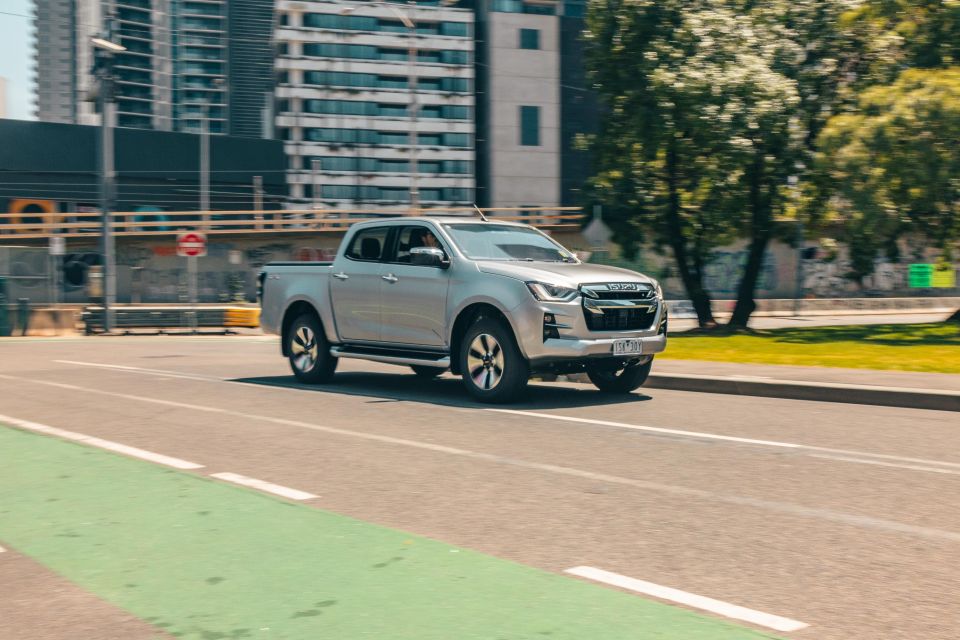
The result is a ute that feels confident and, by virtue of the fact it’s not constantly changing its mind about the best gear on light throttle, smooth on the move. It’s also smart enough to drop a gear going downhill to take advantage of the engine braking.
Driving the previous D-Max around town required strong biceps thanks to its slow, heavy steering. The latest model is a pussycat by comparison, with super-light electric power steering at low speeds making it a breeze to park. You also get a full suite of parking sensors and cameras, which is handy when you’re trying to place what is a big beast a tight parking spots.
That light low-speed steering doesn’t make the D-Max feel flighty at highway speeds. It’s confidence-inspiring on the open road, and the relative lack of wind and road noise means it’s one of the better dual-cab utes in which to while away time on the open road.
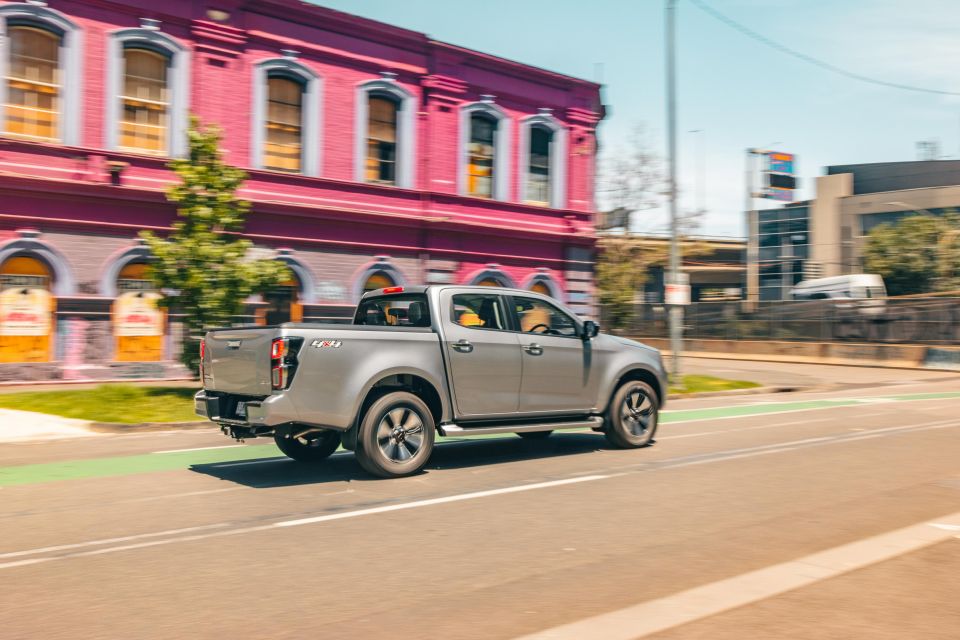
Ride quality is pretty good when there’s nothing in the tray. There’s a hint of sharpness over potholes or speed bumps, but the rear end settles quickly, and never feels like it wants to wander off in a separate direction to the nose. It’s up there with the smoothest in class.
We’ve previously loaded 650kg into the rear of the D-Max. Although the engine has to work harder the ride settles down with more weight over the rear axle, and there’s no awkward squatting with a load on board.
We’ve also put it through its paces on our off-road course. The four-wheel drive system shifts quickly from 2H into 4H and 4L, and it comfortably handled the log climb and steep descent. The traction control system did, however, struggle with one wheel in the air on our offset mogul test.
Isuzu’s suite of active safety features is mostly good, especially the lane-keeping assist, but they can be a bit too hands-on at times. That they’re easier to turn on for 2022 is a win.
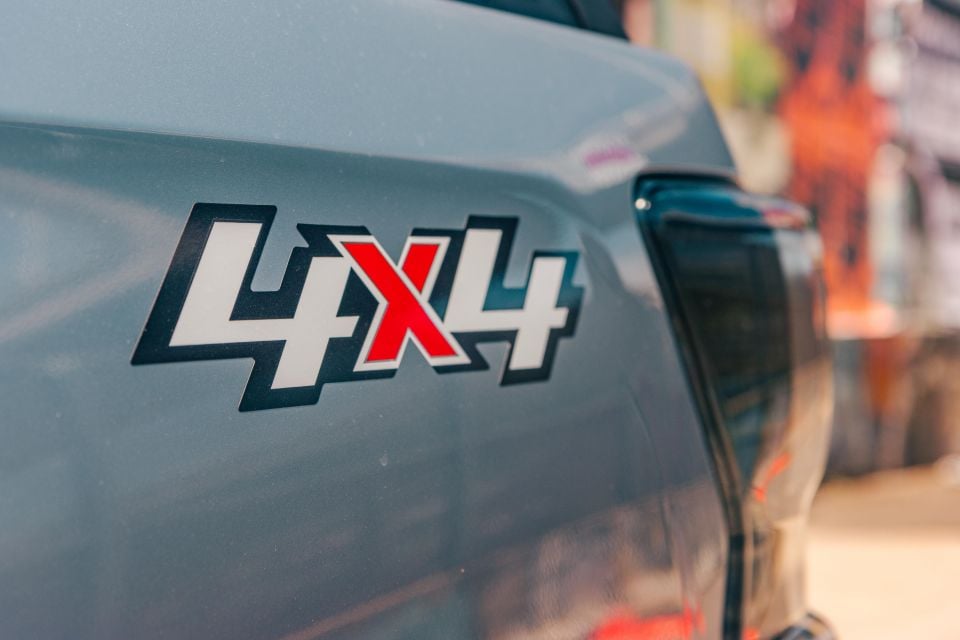
The D-Max is backed by a six-year, 150,000km warranty, and comes with seven years of roadside assist.
Maintenance for the D-Max is required every 12 months or 15,000km, whichever comes first.
The first five years of servicing costs a combined $3513 using Isuzu’s capped-price program.
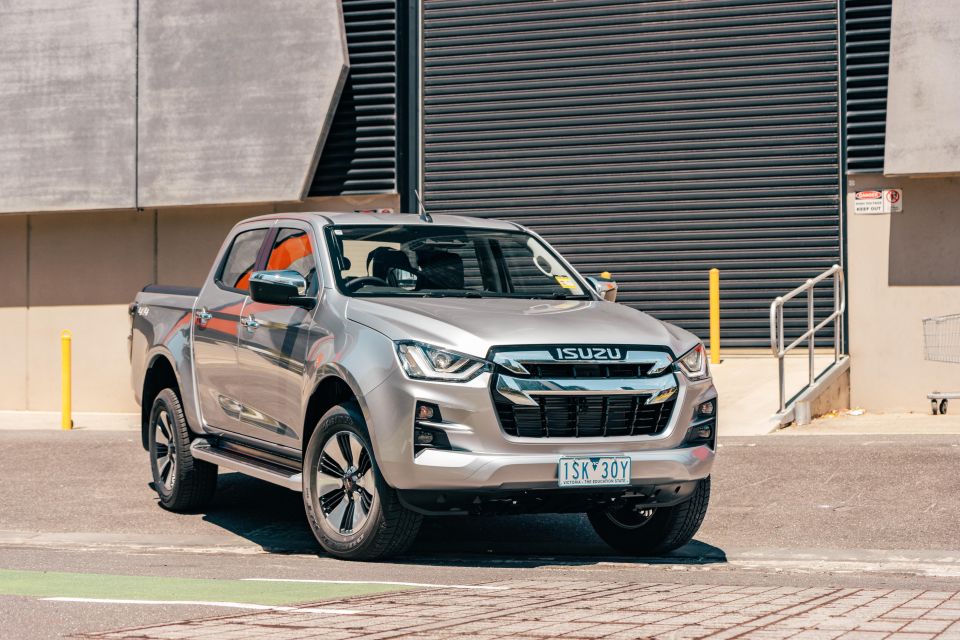
There wasn’t all that much wrong with the Isuzu D-Max to start with, and its 2022 update has made things better.
It’s still nicely appointed, and still smartly balances load-lugging ability with around-town comfort. The 4JJ3 engine remains a smart performer, with more real-world performance than its on-paper outputs would otherwise suggest.
The LS-U+ is a smart addition to the range, offering most of what makes the X-Terrain good without the steeper sticker price or more out-there exterior. Yes, the competition is strong, but the D-Max still holds up.
Its biggest test will come when the new Ranger arrives in the middle of 2022. That’s a head-to-head we’re looking forward to.
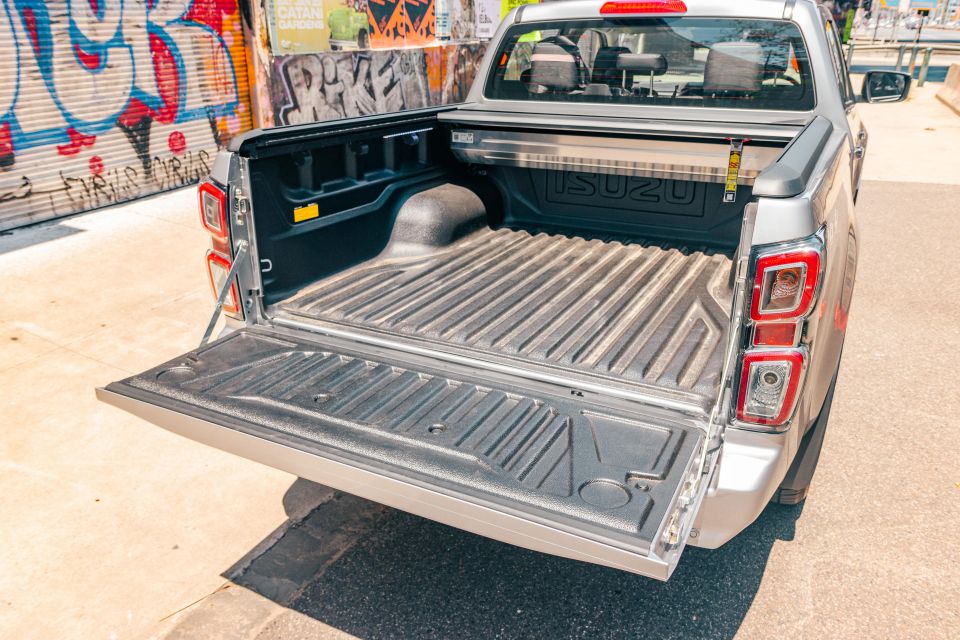
Click the images for the full gallery
MORE: Everything Isuzu D-Max
Where expert car reviews meet expert car buying – CarExpert gives you trusted advice, personalised service and real savings on your next new car.
Scott Collie is an automotive journalist based in Melbourne, Australia. Scott studied journalism at RMIT University and, after a lifelong obsession with everything automotive, started covering the car industry shortly afterwards. He has a passion for travel, and is an avid Melbourne Demons supporter.


Derek Fung
2 Days Ago


Damion Smy
5 Days Ago


Ben Zachariah
7 Days Ago


James Wong
13 Days Ago


Ben Zachariah
14 Days Ago
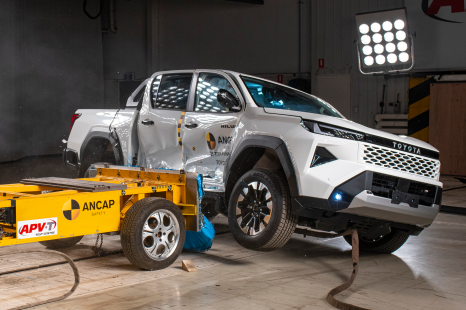

William Stopford
14 Days Ago